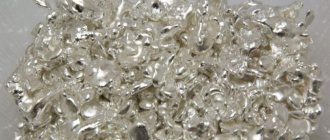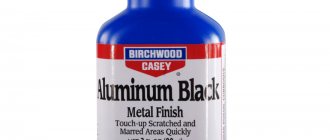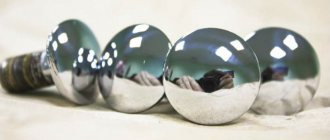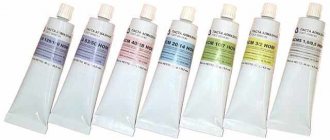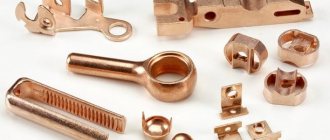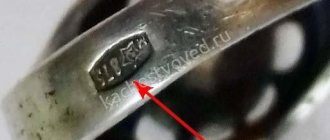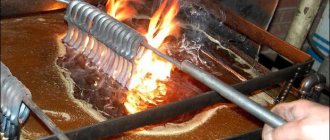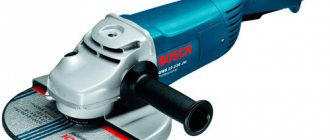Precious metal jewelry is often subjected to various jewelry techniques. For example, silver is blackened in order to change the shade and give contrasting lines in the ornament. Such items look unusual and can be mistaken for antiques, so it is necessary to wear silver jewelry correctly. They do not show any defects, chips, or dullness, however, you need to know how to store and care for them. What is the process of blackening silver, is it possible to do it at home?
Silver blackening: what is the essence of the process. Popularity of aristocratic blackened silver in the 17th century
Blackening or patination of silver is a type of decorative and applied art that appeared among the Russian people in the 17th century. The process of this type of creativity originated in the city of Veliky Ustyug, where craftsmen working with precious metals lived.
The reason for this was the geographical location of the city of Veliky Ustyug. Once upon a time, all trade routes from west to east and back passed through it. Valuable goods and precious metal passed through this city.
Naturally, craftsmen quickly realized that they could make good money in this business. This is how the silver craft appeared, which turned from a way of earning money into an art. Almost every master could perform the technique of blackening silver products, and he did it by hand.
Types of jewelry silver
Jewelry silver is divided into different types. They are distinguished from each other by their appearance, composition, characteristics, and the products that are made from them.
- Sterling silver is an alloy that is the strongest. It is distinguished by its color - perfect whiteness. Sterling silver does not tarnish and is of the highest standard 925. It is successfully used for the production of premium jewelry. Cutlery is also made from it.
- Blackened silver. All jewelry that came to us from the last century is undoubtedly made of blackened precious metal. This is a type of alloy considered aristocratic. It was made by applying sulfur oxides of silver and copper to the finished jewelry. Then the decorations were heated, subsequently dark ornaments appeared on its surface. Such jewelry was often worn as talismans and amulets.
- Oxidized silver. Oxidation is a modern process of coating the surface of jewelry with a protective oxide film. This film consists of silver oxide. Oxidation of noble metal not only protects jewelry from external influences, but helps preserve its color.
- Rhodium plated silver. The rhodium plating process is often used in jewelry production. This is a noble metal, similar in appearance to silver, but its properties are much stronger. Rhodium plating serves as a protective layer for decoration. The rhodium plating method is not too expensive, which is why it is so widespread on an industrial scale. Rhodium plating does not lose its shine, does not fade, and remains white.
Methods for making niello
As already mentioned, folk craftsmen began blackening precious metal more than 3 centuries ago. To this day, niello is one of the classic ways of decorating items made of precious metals. Using this method, silver jewelry is given a black color and all its various shades. Thanks to the niello, the product acquires noble and contrasting outlines. Blackening also helps to hide some defects, for example, seam connections on a ring or bracelet. In addition, blackening makes silver jewelry strong and durable.
Jewelry with a flat surface is not blackened. First, engraving is done on the jewelry, and original designs with indentations are applied. It is into these recesses that the niello is subsequently fused. Engraving depth: approximately 3 mm.
In turn, niello is an alloy that consists of copper, silver, sulfur and lead. These metals are melted down and applied in liquid form to the surface of the jewelry. Heated metals form a chemical reaction. As a result of the reaction, the drawings and patterns become black, and the precious metal itself successfully contrasts with it.
The main methods for producing alloys for blackening:
German
Copper and silver are melted, the entire composition is constantly stirred when heated. Molten lead is poured into it. Then the finished composition must be mixed with preheated sulfur powder. It is important to constantly stir the alloy. Thanks to stirring, all the metals that make up the alloy react perfectly chemically with each other.
Sulfur granules
Modern Moscow
This method involves remelting the following metals: copper, silver and lead. As the melting progresses, sulfur powder is added in small doses, after which the composition is filled into a cast-iron frying pan. The alloy is then left to solidify, crushed into solids, and melted again. At the second stage of heating, the composition is mixed with sulfur and flux.
How and why do jewelers blacken silver?
Silver alloys from which jewelry is made have a faded grayish-metallic tint. Products lose color and darken after a short period of time. In addition, blackening allows jewelers to highlight the relief of the applied design and give it uniqueness. Therefore, a special metal blackening technique is used, which involves the following process:
Grinding. The surface of the product is carefully ground and polished, cleaning it from burrs, dust, grease and plaque; Embossing or engraving. A design is applied to the thoroughly cleaned surface of the product; As a means for blackening, jewelers use solutions containing metal oxides - copper or lead. Some people use silver oxide.
Enterprises use the electroplating method to blacken silver and gold. This is a complex process, which results in high-quality products, but there is a caveat - they are not exclusive.
The cost of products made of blackened silver or other metal is significantly higher than the cost of the same item that has not undergone special treatment. The price of blackened silver jewelry or tableware consists of the cost of the product itself and the work of the jeweler. The result is exclusive jewelry that is simply impossible to replicate.
Methods of applying black: dry and wet
There are two ways to blacken silver items:
- Dry method. The silver surface must be moistened with a special solution for blackening silver, then apply fine powdered black. The prepared decoration is dried and fired in a muffle. Required temperature for firing: 300-400 degrees Celsius.
- Wet method. We are talking about niello, made in the form of a mushy mass, diluted with water, and using a brush to fill the engraved recesses. Then they leave it for a while, waiting until the water evaporates, and calcinate it in a muffle. The heated niello softens, melts and spreads over the design; if the decoration is small, then a special soldering gun is used.
After the blackening procedure, the product is sanded and sanded.
Methods of applying niello
Currently, two methods of blackening silver are used.
With the dry method, the metal surface is treated with a special blackening solution, after which black powder is applied. In this state, the product is first dried and then sent to a muffle furnace for firing at a temperature of 300° C.
The second method is called wet. A creamy solution, diluted with water to the desired consistency, is applied to the recesses on the surface with a brush or spatula, and then dried until the water has completely evaporated. In a muffle furnace, the niello softens, spreads and fills the reliefs, penetrating the metal structure. After firing in the kiln, cleaning and polishing are carried out.
Blackening at home
The blackening procedure is available not only to specialists. It can also be done at home using relief products.
Application of iodine
To blacken silver yourself at home using iodine, you will need: iodine, toothpaste, a soft cloth, and a cotton swab. The stages of work are as follows:
- the entire product must be lubricated with iodine;
- let dry in the sun (preferably);
- wait until the surface darkens;
- After that, apply toothpaste to a cloth or cotton swab, then carefully wipe the product.
The niello will remain in the recesses, and the convex parts will shine in a new way. The method is simple and affordable, it will take no more than two hours.
Using sulfur for blackening
It takes even less time - within an hour - to apply blackening to silver with sulfur. For this work you need sulfur ointment, which can be bought at a pharmacy. There is no need to cover the entire surface with it, but apply it only to those parts that are supposed to be “blackened.” You need to apply sulfur very carefully and carefully. If it gets into the wrong place, it will be extremely difficult to remove it. Therefore, it is better to use a cotton swab or even a toothpick for work.
Then you need to warm up the product: with a hot hairdryer, in the oven at a temperature of up to 130 C, or in boiling water. It is believed that the higher the temperature, the faster the reaction between sulfur and silver occurs. You need to heat until the ointment is completely dissolved, but you need to make sure that no undissolved residues remain in the recesses.
Despite the simplicity of the methods of blackening at home, they are unlikely to have the sophistication and subtlety of execution. If you want to purchase high-quality original silver jewelry or silverware with blackening, you should go to the website of Ali Askerov’s online store “Caucasus Souvenir” and choose what you like.
Silver blackening technology
Silver can be blackened using several methods.
Mechanical impact
The mechanical blackening method is the direct action of certain substances on the surface of a silver product.
Silver bracelet with blackening
Applying a mixture of graphite with iron oxide and turpentine to a silver product
First, graphite and iron oxide are mixed, then turpentine is added to the composition. The resulting solution is applied to the silver jewelry, left until it becomes dry. As soon as the composition on the surface of the jewelry is dry, it is wiped with a soft rag, fiber or suede, which is pre-moistened in alcohol.
Electroplating with electrodes
Galvanic silver is produced by mechanical blackening. The electrolysis method with electrodes helps make the precious metal blackened and aged. But, unfortunately, the niello applied by this method is short-lived and wears out quickly. Electroplating is ideal only for blackening inexpensive silver jewelry.
How to blacken silver using improvised means at home
You can darken precious metal yourself at home, using readily available and inexpensive means at hand. Common recipes for patination of silver at home.
Darkening with a Boiled Egg
One of the simplest ways to darken silver at home. You will need:
- chicken egg – 1-2 pcs;
- a container that can be tightly closed;
- thin thread, fishing line will also work.
Blackening stages:
- The eggs need to be boiled.
- Clean silver jewelry from dirt.
- Cut the boiled eggs in half, using only the yolks.
- Place the yolks on the bottom of the container, hang the silver item on a thread, secure it to the lid of the container and close tightly. The decoration should dangle inside the container; it should be rotated periodically so that the blackness is formed evenly.
- Remove the jewelry after 5-6 hours.
How can an egg darken silver? In fact, a chemical process occurs: the egg yolk releases hydrogen sulfide, which changes the color of the metal.
Blackening silver with a boiled egg
Sulfur ointment and hair dryer
You can get blackened silver using sulfur ointment and a regular hair dryer. It is necessary to heat the ointment with a hairdryer so that it becomes liquid. As soon as the ointment begins to flow, pour it over the surface of the silver jewelry. By the way, you can notice that already at the initial stage the metal will begin to darken. After the ointment has hardened, sand the metal with special sandpaper, and the blackening process can be considered complete.
Application of iodine
Iodine, which is found in every housewife's medicine cabinet, is also an excellent means for blackening precious metals. To begin with, silver earrings or rings need to be cleaned of fingerprints, sweat marks, and dirt. Then, using a cotton swab or swab, the jewelry should be thoroughly coated with iodine and left to dry in the sun.
What is a mob? Blackening silver at home
Niello is one of the ancient techniques of decorating various silver and gold objects by painting them black. The consequence of using this technique is the contrast of colors on the surface of objects, and it does not matter whether it is an ornamental design or a relief detail. Thus, silver blackening is also used to hide minor flaws on a product, such as small scratches or connecting seams.
Advantages and disadvantages of the home method - how to age silver at home
Blackened silver has many advantages:
- it does not need to be constantly cleaned;
- it does not fade or darken, since it is already black;
- a piece of jewelry that has been artificially aged looks antique and expensive.
If we talk about the disadvantages of blackening at home, it is important to note the risk of causing potential harm to the noble metal. Without precise knowledge and skills of blackening technology, silver items can simply be ruined.
Blackened silver and oxidized - what's the difference?
Oxidized products are too smooth in appearance, smooth to the touch, and not much of a dark color. When the metal undergoes true blackening using sulfur, copper and lead, the appearance is different. It is a rich black color in some places, lightish in others. Such products have deep, clear and noble patterns. When cleaning oxidized silver, light spots may appear. Blackened silver is more resistant to polishing and cleaning, and loses its blackness if boiled for a long time or when immersed in acid.
Get rid of blackheads in 30 minutes
The most affordable and easiest way to get rid of black metal: clean the precious metal with a soda solution.
You need to pour 2-3 teaspoons of baking soda into a saucepan with water. Place foil on the bottom of the container and decorations on top. Boil the contents of the saucepan for about 5 minutes. By the way, this cleaning method is also applicable for tableware and silverware.
Another effective means for cleaning silver items from niello is citric acid. Moreover, you can use both powdered citric acid and juice squeezed from lemon.
Lemon juice, which is not as concentrated as citric acid, is more gentle on the blackness on silver.
How to clean silver from blackness using citric acid? Dissolve 100 g of powder in half a liter of water in a bowl, wrap silver items in foil, and place inside the container. Boil the solution for 15 minutes. Boiling in a lemon solution helps make the product snow-white and shining.
When blackened silver looks appropriate. How to choose the right jewelry
Jewelry made from niello-treated silver is not intended for every day. They look perfect with an ethnic, animal, or boho look.
In order not to be mistaken about the authenticity of silver, you should make purchases in jewelry stores with a proven reputation, check the mark on the product and, if necessary, request a certificate for the product.
You should be wary of purchasing jewelry online or on Avito. It is better then to purchase the jewelry at a pawn shop or at a discounted price, since it will already be checked by a local jeweler.
Care
In order for your jewelry to maintain its original appearance, it needs to be cleaned periodically. What not to do? Do not use: ammonia, abrasive materials, under no circumstances should we boil the product or scald it with boiling water. The following method will do:
- Having prepared the soap solution, add a little salt, put in your chains, earrings and rings, and leave for 20-30 minutes. After this, rinse thoroughly and leave to dry;
- Another way. Place your decorations in water with peeled potatoes and leave for 4-5 hours. Then rinse with water and dry;
- You can clean the product with a regular eraser, which is also a very effective method;
- We use toothpaste and a soft cloth. Apply toothpaste to the product and very gently, slowly, clean the metal. The main thing in this method is to choose a toothpaste with a minimum amount of abrasives.
Review
I started wearing black silver several years ago. These are some of my favorite pieces of jewelry today. They feel unique, bohemian, some kind of magic and esotericism.
Anastasia R., Lviv
Zhenya K., Moscow
I wear blackened silver items, which I am very pleased with. Especially because this metal is easy to maintain. Cleaning once every few months, using affordable means, suits me perfectly. The undoubted advantage of such jewelry is that even if they turn black or fade, no one will notice it.
I would like to note the aesthetic aspects of silver jewelry with niello. They look expensive, as if they were inherited from their great-grandmother, the countess. Therefore, his nobility is not just emphasized, but even intensified.
Valentina P., Stavropol
